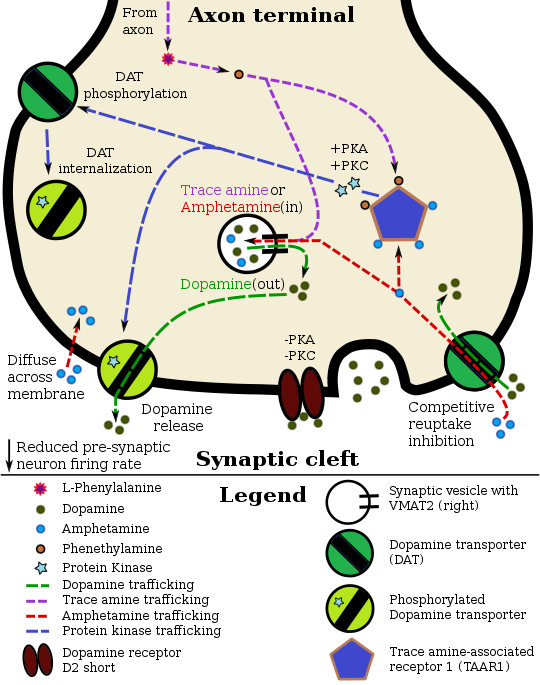Template:Amphetamine pharmacodynamics
Jump to navigation
Jump to search
Pharmacodynamics of amphetamine in a dopamine neuron
|
References
Usage
To transclude this template, use:
{{Amphetamine pharmacodynamics |caption= |header= |align=}}.
The default caption and header are displayed in the image to the right. The default alignment is "right".
The image's alternative text is set as "A pharmacodynamic model of amphetamine and TAAR1".
| The above documentation is transcluded from Template:Amphetamine pharmacodynamics/doc. (edit | history) Editors can experiment in this template's sandbox (create | mirror) and testcases (create) pages. Please add categories to the /doc subpage. Subpages of this template. |
